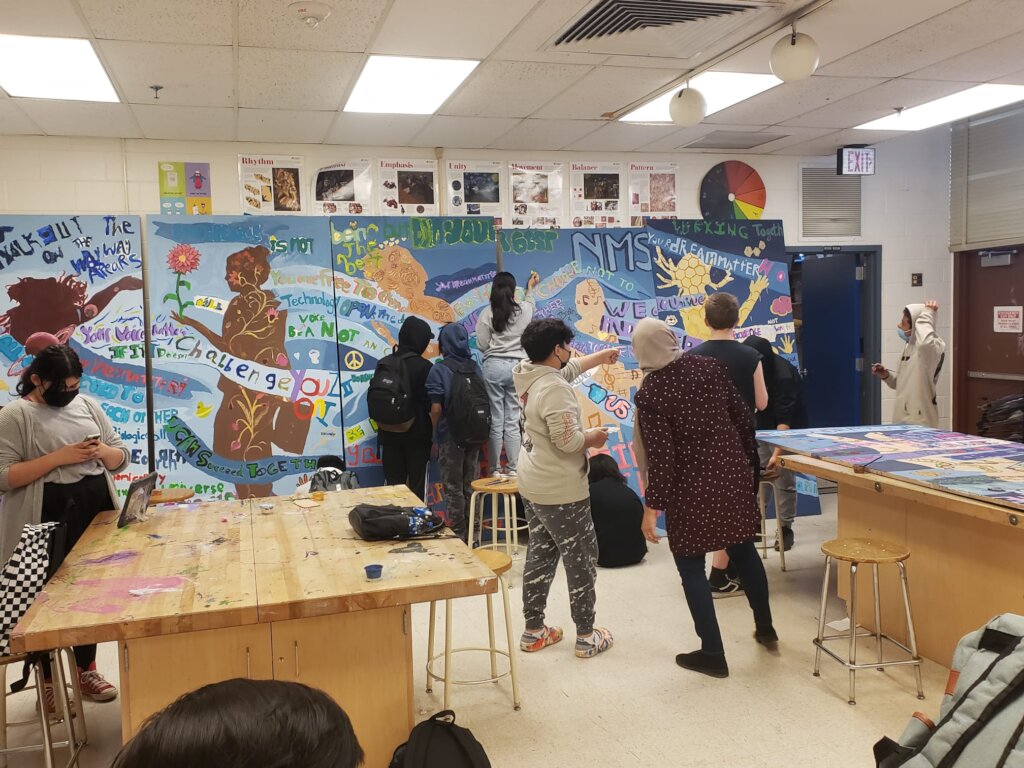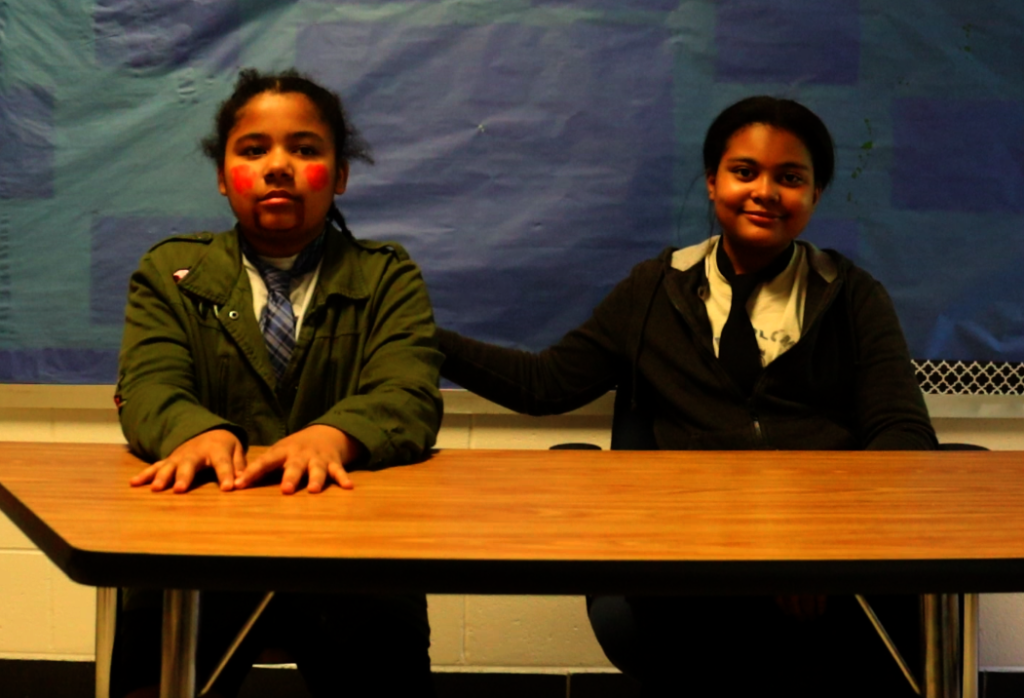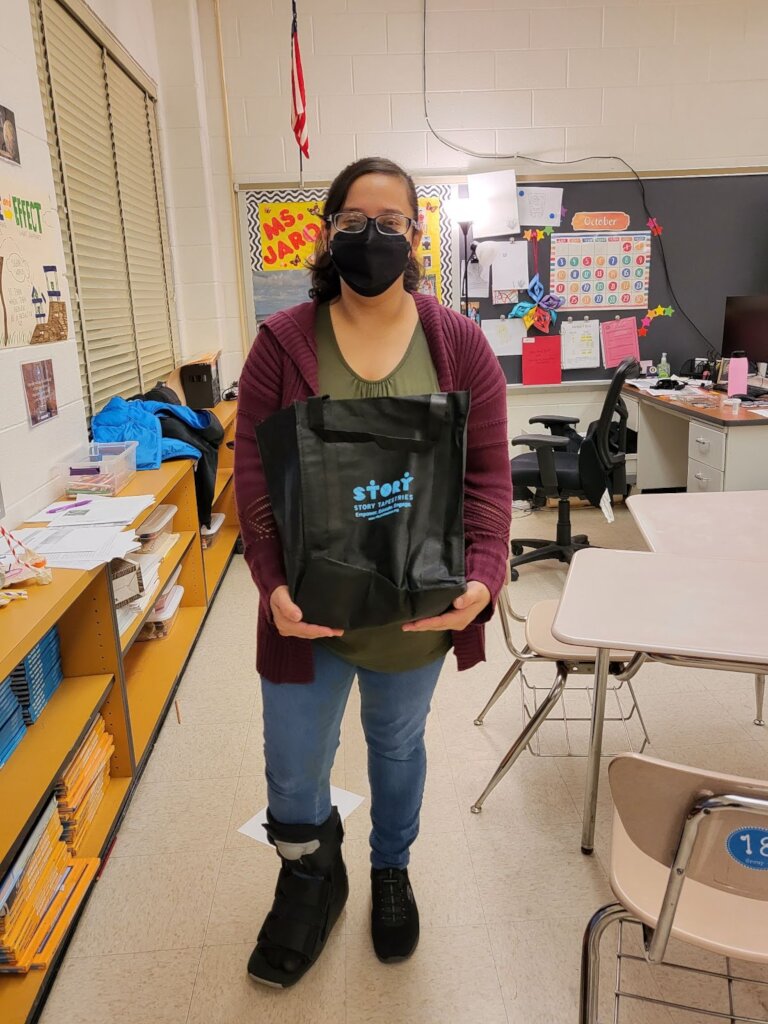By Arianna Ross | Founder and CEO
The 2021-22 academic year was an exciting time to be back in the classroom with in-person experiences. This was at times dampened by the resurgence of the pandemic as a result of new variants, and struggles with hurdles such as lack of staff, lack of continuity, and an increasing gap for students disproportionately affected by COVID-19 and its ongoing impact. Story Tapestries’ Teaching Artists remained committed to making adaptations and accommodations to support our school partners and their awesome staff and students. Slam Poet and Master Teaching Artist, Regie Cabico, shares about his experience with long-time partner, Neelsville Middle School:
“The Silk Road is an integral aspect of understanding World History, which incorporates well with poetry writing for middle school students. During the pandemic, I found creative ways for students to engage with a persona poem: inventing a character that would travel from China to Rome. There is a dramaturgical skill in seeing how a character goes through the journey of the Gobi desert, passing temples, and marauders out to pillage the goods of glass from Rome to the porcelain and silk of China. Through arts integration, students experience a richness in understanding the valuables traded. I tell my classes, ‘Before Target and Amazon.com, there was The Silk Road.’ To open students’ minds to the content, I incorporated spoken word techniques that use triggers and glimmers of what students shared, followed by prompting them with questions about what they think brought Silk Road travelers joy and misery while making their journey.
My residency started with Ms. Henwood’s class, who quickly absorbed the idea of the lune - an 11-word poem and American version of the haiku. I took three words from the Silk Road goods; horse, silk and gun, and then asked students to combine them with eight more words. The results were astounding as they explored literary tools like:
Onomatopoeia-
Gunshots POW! KAPOW!
Horses running out of control
Silk on road
Hyphenated words-
I feel like
A horse, riding the Silk
Road, gun-battling Romans
Ms. Henwood enriched the lessons with a visual arts component so the students made visual interpretations of the specific imagery from their poems.
Working with Mr. Sanchez, the Social Studies chair, allowed me to devise a vocabulary list. The World History textbook offered chapters on Asian religions, which we added to the list of goods that were sold. With this class, we emphasized geography and I emphasized the storytelling aspect of poetry. In all my sessions we used improvised movement to unlock the text by embodying words in short poems like, ‘I used to be the Gobi desert, now I’m the Yellow River.’
With Ms. Budd, I opened up the lune by having students draw one image on the board: cyclone, chicken, Great Wall. Then I asked them to build the picture by drawing one additional object at a time. In this way, I demonstrated poetry as a tiny photograph packed with details and encouraged students who weren’t ‘writers’ but identified as ‘drawers’ to show versus tell me, and in this way they could engage in this ‘pictionary-esque’ technique.
My residency opened new strategies to engage students in poetry writing, creating a complete arts integration residency using the Silk Road content. I am grateful to Story Tapestries and the Neelsville 6th grade Social Studies teachers for the opportunity to play with metaphors and imagery. All of this, during an Omicron Covid wave, felt like its own Silk Road journey.”
This story Regie shares demonstrates what truly makes a difference - the ability to adapt and respond to what’s happening and to find avenues for every individual to engage, connect and share. This opens up the learning experience to every type of learning - audio, visual, kinesthetic or a combination of these styles. We worked with Sharp Insight’s evaluation team to assess and analyze program results, and the impact story is inspiring. Students who participated in arts integration programs at Neelsville had the opportunity to participate in surveys and discussion groups to reflect on their experiences. When asked what comes to mind when you think of the project, the words “community” “teamwork” “unite” and “together” were top words that were used. This prevailing message is significant for middle school students in particular, who in the phase of adolescence have an especially strong need to identify with others and feel a part of a community.
In fact, students shared comments like:
“The program helped me find ways to be closer to my friends.”
“I learned how to control my emotions and be a stronger person.”
“I am comfortable taking more risks and being creative.”
“I learned skills I can use in life.”
This program is funded by the Trawick Foundation and by support from individual donors like you!
Thank you for your continued support.
Links:
Project reports on GlobalGiving are posted directly to globalgiving.org by Project Leaders as they are completed, generally every 3-4 months. To protect the integrity of these documents, GlobalGiving does not alter them; therefore you may find some language or formatting issues.
If you donate to this project or have donated to this project, you can receive an email when this project posts a report. You can also subscribe for reports without donating.
Support this important cause by creating a personalized fundraising page.
Start a Fundraiser

